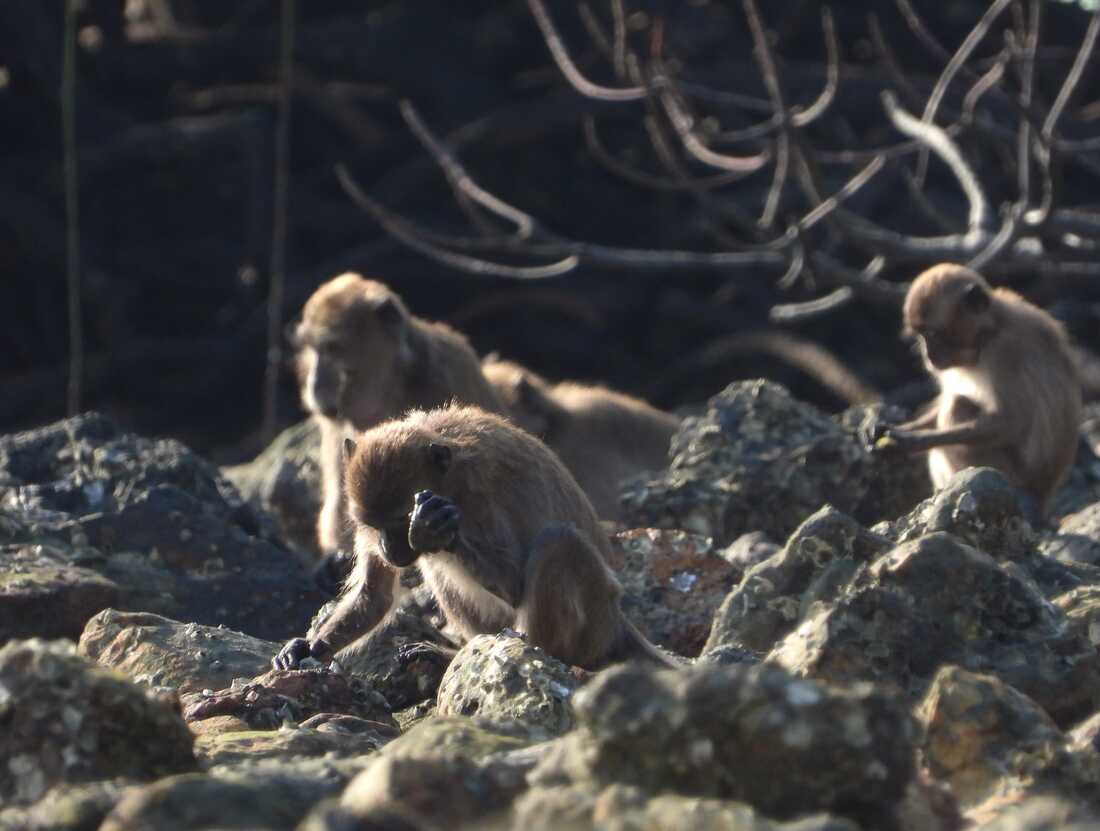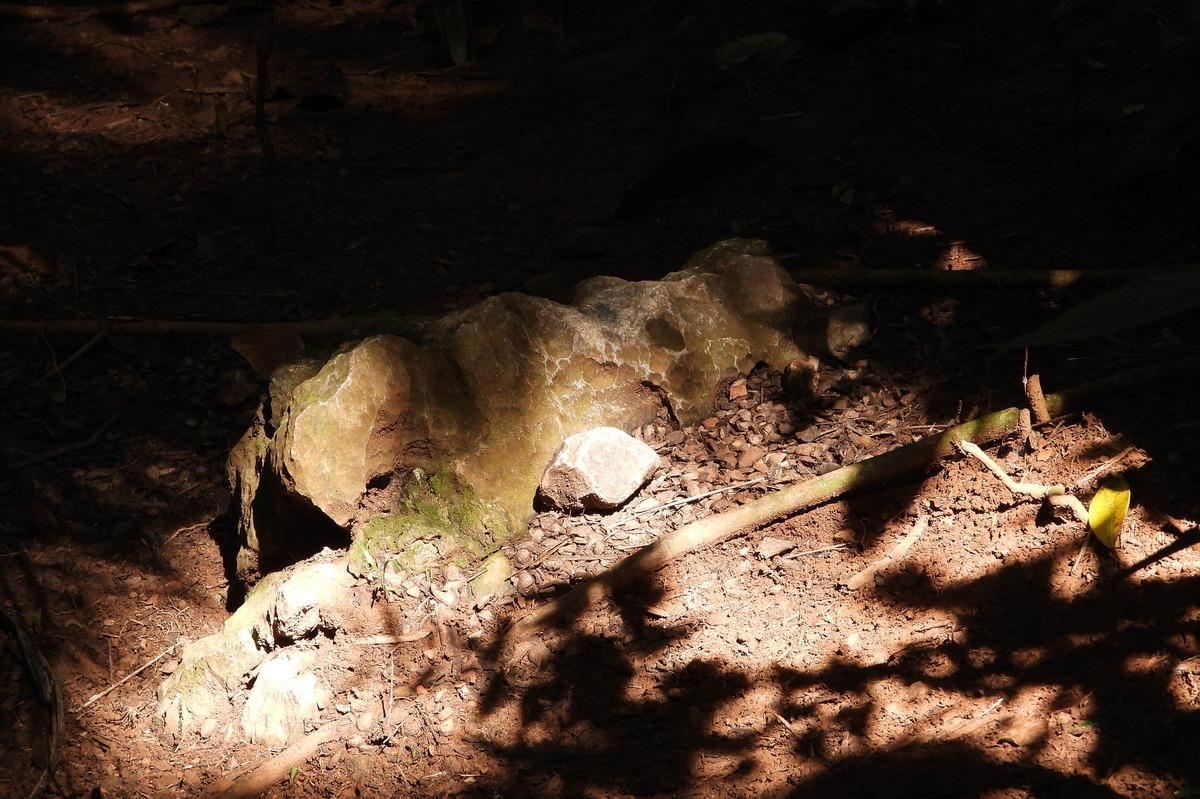Monkeys making stone slabs raise questions about early humans: shooting


Macaques use rocks as hammers to break open foods such as shellfish and nuts.
Lydia V. Luncz
Hide description
Change caption
Lydia V. Luncz

Macaques use rocks as hammers to break open foods such as shellfish and nuts.
Lydia V. Luncz
Monkeys in Thailand use rocks as hammers and anvils to crack nuts, often accidentally creating sharp stone chips that resemble the stone cutting tools made by early humans.
This is an amazing discovery It is described In the magazine Advances in scienceArchaeologists are wondering if they may need to rethink their assumptions about some of the stone artifacts produced by early human ancestors a million years ago.
“You have non-human primates that create things that look like the kind of things that we want to attribute to humans and human ancestors,” he says. Jessica ThompsonA paleoanthropologist with Yale University who was not part of the team that conducted this new research.
The development of sharp cutting tools made of stone, 3.3 million years ago, has long been seen as a key technological innovation in human history, and it is fraught with much speculation about evolution, she said. Special characteristics of people.
But now, Thompson said, archaeologists have to deal with the problem of trying to determine whether the sharp stone surfaces were created on purpose or by accident.
“From when the first stone tools were made by the first people, to when people started moving to South America,” she said.
Scientists used to think that making and using tools was unique to humans, but now they know that tool use is not so uncommon in animals.
Still, the use of stone tools by primates is very rare.
A small number of chimpanzees in West Africa are known to use stones as hammerstones, although they do not leave many flakes behind, probably because of the type of stone they use.
And capuchin monkeys in Brazil have been seen pounding seeds and nuts with stones — something they’ve been doing for centuries, apparently leaving their own archaeological remains. Record.
That is why some researchers have recently called Question Ancient sites dating back 50,000 years are some of the earliest evidence in Brazil of when humans may have entered the continent, suggesting they may have been created by apes instead of humans.
Capuchin monkeys also sometimes break rocks by pounding them on purpose for no apparent reason (and sometimes lick or chew on crushed rocks).
This movement produces sharp-edged scales. look out As purposefully made stone tools – although the monkeys in Brazil never use broken flakes as tools, scientists reported in 2016.
Some of the researchers involved in the study have now turned their attention to wild long-tailed macaques in Thailand. These monkeys use stones as anvils and hammers to crack open oil palm fruits.
“They’re a little bigger than a peanut and can be quite heavy,” he says Thomas the Prophetwith the Max Planck Institute for Evolutionary Anthropology. “Put the oil palm on the anvil and use a hammer with one or both hands.”
As the monkeys repeatedly try to hit the nut, they sometimes miss and instead hit the two rocks together. This creates broken pieces of stone that collect around the brain.
“These tools and these broken pieces resemble some of the things we see in the earliest archaeological records,” says Prof.
David BrownThe George Washington University archaeologist said it was unnerving to go into the forest and see hundreds of artifacts dumped on the ground and “know that there are no people doing this.”

An anvil and hammer stone used by a long-tailed macaque to crack nuts.
Lydia V. Luncz
Hide description
Change caption
Lydia V. Luncz

An anvil and hammer stone used by a long-tailed macaque to crack nuts.
Lydia V. Luncz
If archaeologists like him came across these tools in a million-year-old dig, he says, “we’d probably look at it like, ‘Oh, they’re making flint to cut things.’ But they’re not.”
No one has seen these monkeys do anything with flakes – they clearly have nothing to cut. “Once a fac hits the floor, it just stays there,” says the professor.
He and his colleagues analyzed more than a thousand stone fragments associated with apes, calling it “the most extensive collection of non-human primate percussive flakes and flaked stones to date.”
When they compared these stones to stone artefacts or assemblages from ancient human ancestral sites in Tanzania, Kenya and Ethiopia, they found many similarities and overlaps.
There are ways to identify stone tools made specifically for cutting, such as the presence of cut marks on animal bones, or additional modifications to make the tools more attractive, or evidence that stone came from somewhere else specifically for tool use.
Also, archaeologists can look at the core of a stone struck to produce flint to see if there are patterns that indicate the toolmaker understood the fracture patterns and exploited them.
However, Braun says that one could drop macaque-made scraps into the excavations of early human artifacts and no one would notice.
“Are the assemblies we see in the fossil record made by apes? Maybe not,” he said.
But he thinks archaeologists should seriously consider the sharp cracks they now see at human sites, some or all of which were unintentional.
“Some of the records that we think are related to the production of sharp edges may be actual technology,” he said.
In particular, Thompson thinks that this study can increase the debate on the nature of archeology Site It started in Kenya 3.3 million years ago.
That site contains what appear to be the oldest stone tools ever found. They are so old that they were made from the most primitive species ever created by ancient mankind. Homo Genus.


Emma FinestoneA stone tool expert at the Cleveland Museum of Natural History said this new research is interesting to consider when thinking about the earliest use of stone tools in human history.
“Could it have started with the oddities becoming more prominent, and then the flakes came along as a drumming effect?” she says. “Maybe it’s a clue to how stone tools got started in the first place.”

Chimpanzees and other primates with sharp canines don’t need knives because they can tear through anything they want with their teeth, Brown says.
Although wild primates have not been observed using cutting tools, captives can be trained to do so, and one untrained orangutan has been in captivity. It was noticed To suddenly use a sharp stone to cut something.
Over the course of human evolution, teeth became smaller as brain size increased, Brown says, and sharp cutting tools became necessary if humans were to use large game as a food resource.
The growing understanding that various primates make stone chips by accident suggests that early human ancestors could have had as many tools as possible to cut something when and if it was necessary.
“It’s certainly possible that they’re producing or producing them,” he said, “much earlier than they want.”
We offer you some site tools and assistance to get the best result in daily life by taking advantage of simple experiences
